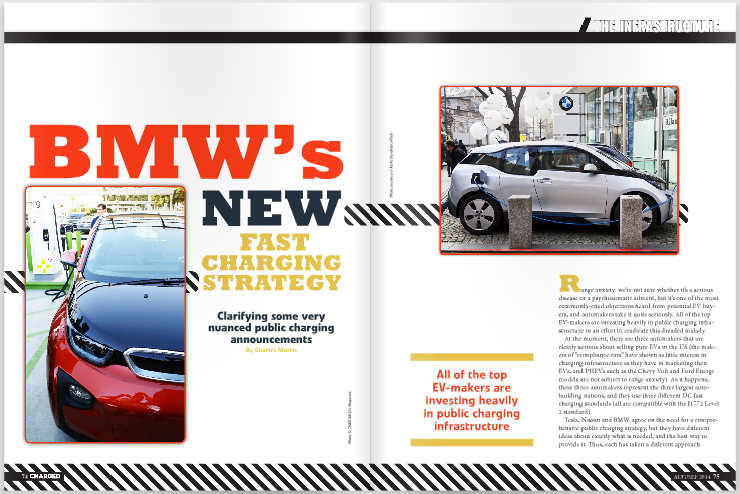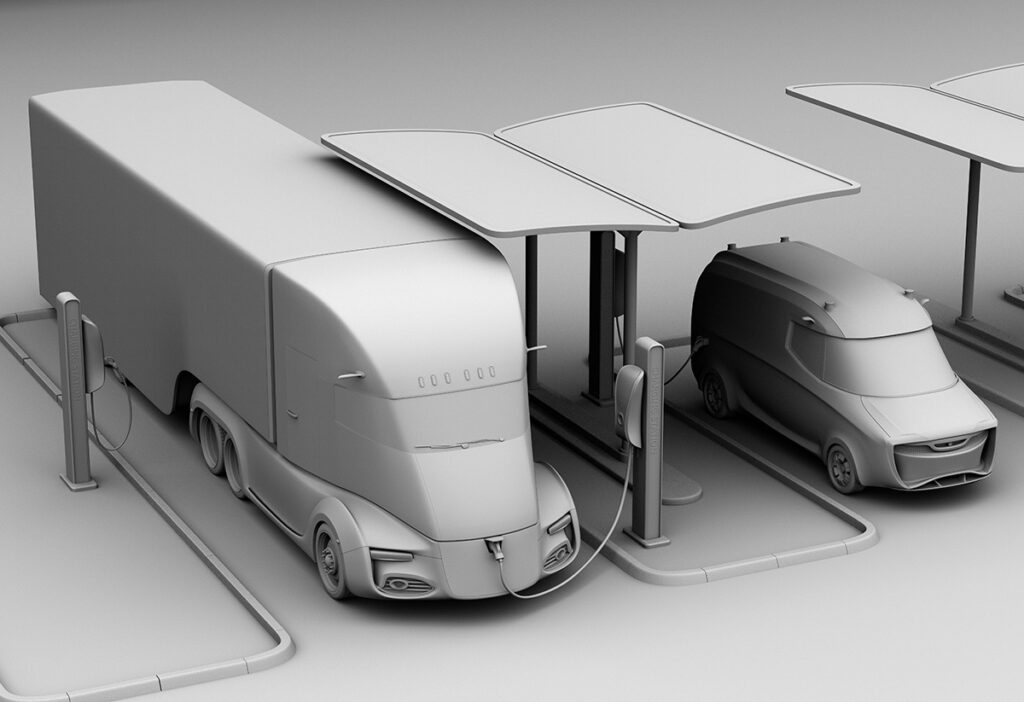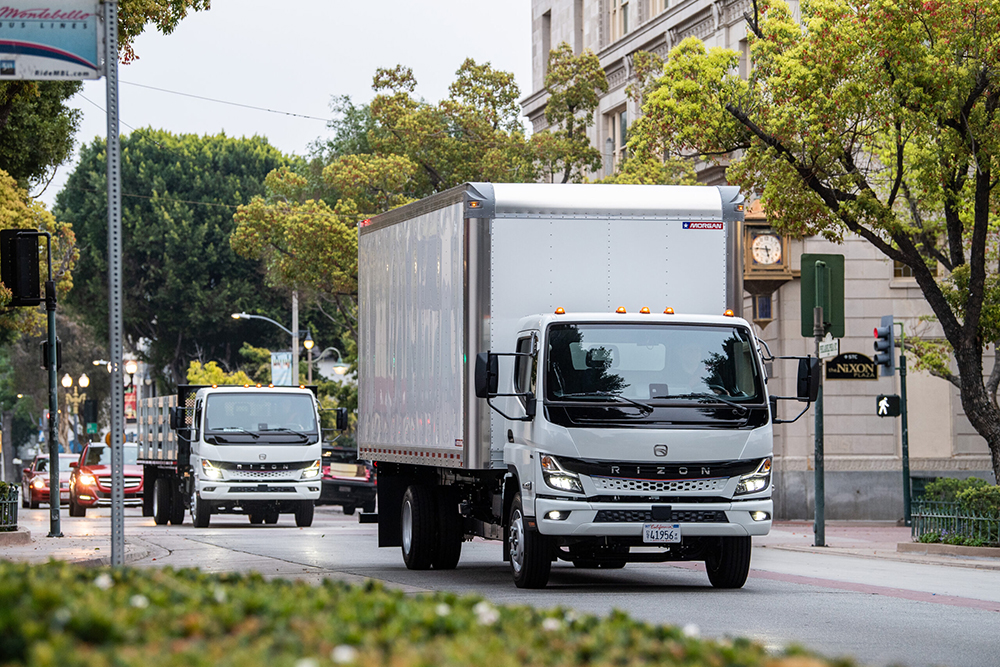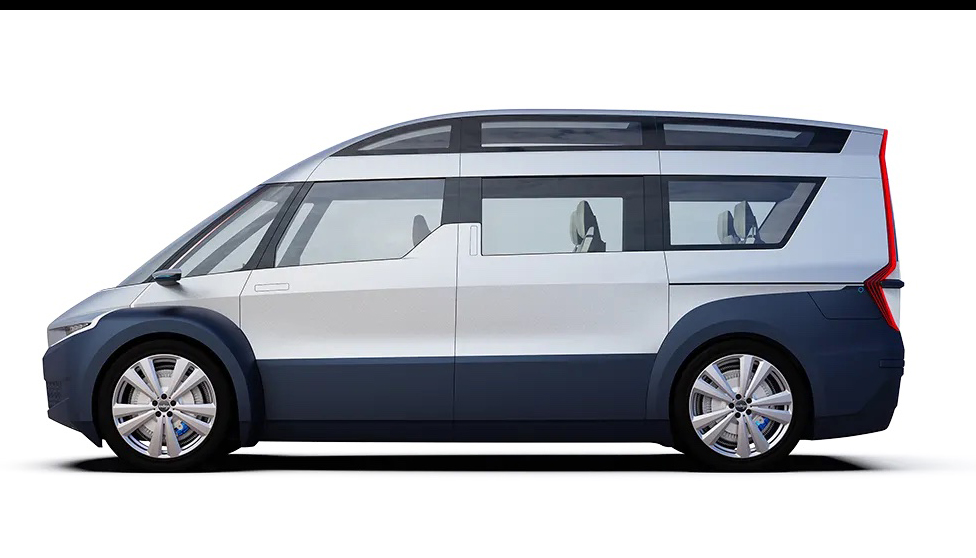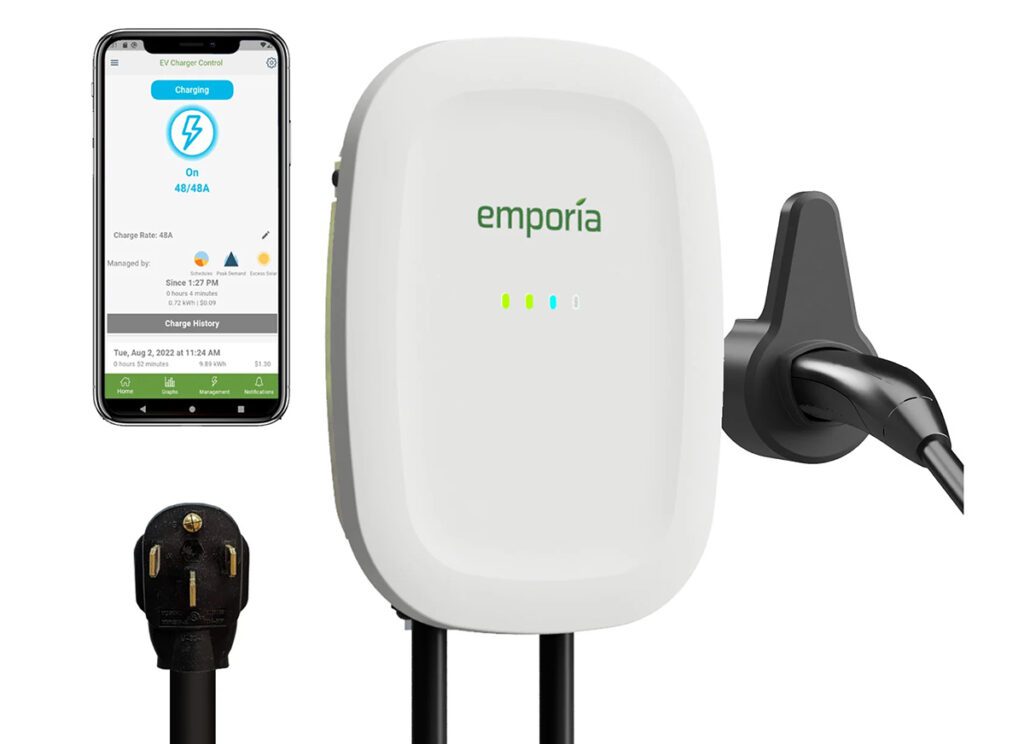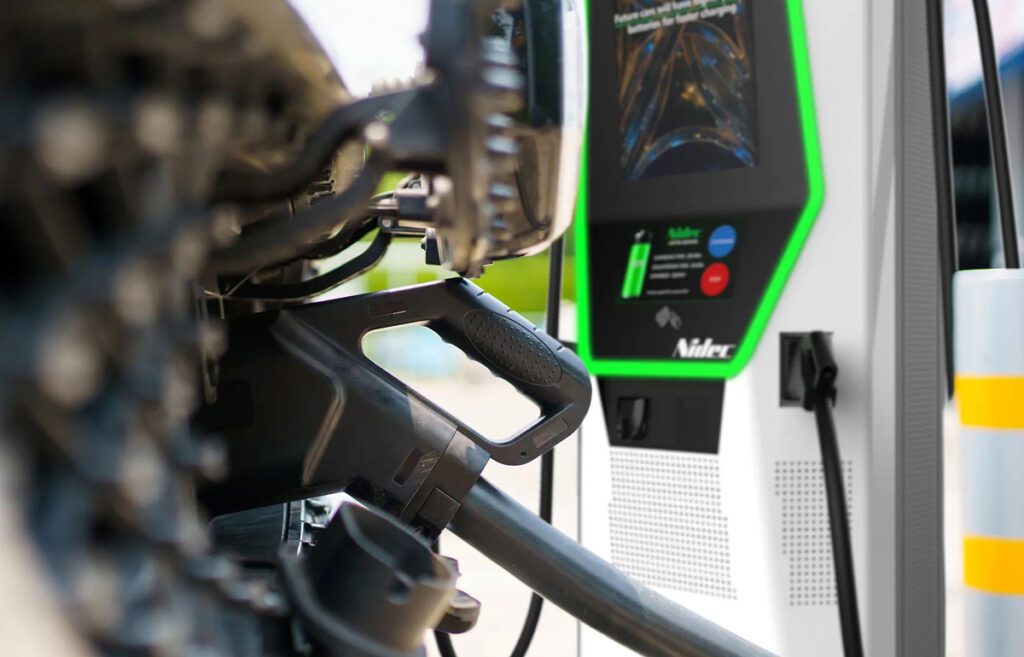Range anxiety: we’re not sure whether it’s a serious disease or a psychosomatic ailment, but it’s one of the most commonly-cited objections heard from potential EV buyers, and automakers take it quite seriously. All of the top EV-makers are investing heavily in public charging infrastructure in an effort to eradicate this dreaded malady.
At the moment, there are three automakers that are clearly serious about selling pure EVs in the US (the makers of “compliance cars” have shown as little interest in charging infrastructure as they have in marketing their EVs, and PHEVs such as the Chevy Volt and Ford Energi models are not subject to range anxiety). As it happens, these three automakers represent the three largest auto-building nations, and they use three different DC fast charging standards (all are compatible with the J1772 Level 2 standard).
Tesla, Nissan and BMW agree on the need for a comprehensive public charging strategy, but they have different ideas about exactly what is needed, and the best way to provide it. Thus, each has taken a different approach.
Tesla Supercharging
Like everything that Tesla does, the company’s public charging initiatives are very ambitious. Giving drivers a way to take long road trips in their EVs is a top priority, so the company is building a network of DC fast chargers situated at strategic locations along interstate highways.
Tesla builds the high-power charging hardware, partners with site hosts, oversees the installations, manages the network’s back-end systems, and offers its customers unlimited use for free.


While some have criticized the company for going with its own proprietary charging standard, others say that Tesla was simply ahead of the game and didn’t choose to wait around for the world’s standards bodies to get their acts together. One reason Tesla decided to introduce its own hardware set is that it allows higher power levels, and thus faster charging, than CHAdeMO or SAE Combo. Tesla has offered to let other automakers in on its Supercharger standard, and has held discussions with Nissan and BMW, although no agreement has yet been announced.
Turning the Titanic around
The large established automakers are far more conservative than the risk-taking start-up from Silicon Valley. They stick to what they’re good at – designing and building cars – and “work with partners on” (i.e. outsource) virtually everything outside of their core competencies. In fact, managing a large network of top-of-the-line parts and service suppliers is one of the things that the car companies do best. However, building electrical supply equipment and managing comprehensive charging networks is very different from the processes that they’ve honed and perfected for decades. So, we see the major automakers partnering with many different hardware and infrastructure providers to carry out their public charging strategies.
Nissan
Since introducing its own branded DC fast charging equipment in the summer of 2012, Nissan has been busily building public charging stations in an apparent effort to create “facts on the ground.” The company has now facilitated the installation of over 600 CHAdeMO DC fast chargers in the US alone.


“We’re well ahead of our goal, and we’re going to keep adding chargers every day though our network of partnerships,” Brendan Jones, Nissan’s Director of EV Infrastructure and Strategy, told Charged in April.
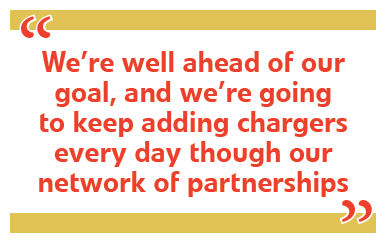

Although the German and US automakers (except Tesla) went ahead with their competing SAE Combo standard, Nissan seems to have succeeded in ensuring that CHAdeMO will be accepted alongside SAE Combo in Europe and North America. Some major charger manufacturers, including ABB, have (wisely) sidestepped the standards war by introducing dual-standard chargers.
Like Tesla, Nissan sees free charging as a selling point for its vehicles. Its No Charge to Charge program offers two years of free charging to new LEAF buyers in several major US markets.
Unlike Tesla, however, Nissan enlisted its “partner” NRG eVgo to handle the back-end system management. The two companies also decided to make EV drivers’ lives a little easier with the new EZ-Charge card, which enables access control to public Level 2 and DC fast chargers from several of the major charging networks, including ChargePoint, Blink, AeroVironment and NRG eVgo.
Enter BMW


A couple of months after its i3 EV went on sale in North America, BMW made two separate announcements, both aimed at making public charging more accessible and more convenient for i3 owners. First, the company launched its own 24 kW DC fast charging hardware. Second, i3 drivers in California will receive no-cost public DC fast charging at NRG’s eVgo freedom stations (where available) through 2015.


When BMW released its new charging plans, many major news outlets mischaracterized the efforts and reported that BMW is “launching a network of charging stations” as an answer to Tesla. In fact, BMW is not building a network at all, and its plans bear more resemblance to Nissan’s than to Tesla’s.


Hardware
Like Nissan, BMW will be deploying its own branded DC fast chargers, with an initial focus on getting its dealers to install the hardware. A joint development between BMW and Bosch, the 24 kW BMW i DC Fast Charger is about half the size of most DC chargers (31x19x12 inches), weighs around 100 pounds, and can be mounted on a wall, a first for DC fast chargers.
Beemer’s box also has a comparatively low price tag – $6,548 for its authorized partners, such as dealerships.
BMW i DC Fast Chargers use the SAE Combo 1 connector, and are ChargePoint network-enabled. They feature a rugged aluminum IP54 enclosure, and are designed to perform in extreme weather conditions, from -40° to 185° F.
Why 24 kW?
Everyone wants more power, or thinks they do, but for BMW, chargers that operate at 24 kW, instead of the more common 50kW, actually make more sense. As Cliff Fietzek, Manager of Connected eMobility for BMW of North America, told Charged, “24 kW is easier to install, it’s lighter, and on the charging time for the i3 it doesn’t make much of a difference. With a 50 kW charger, you go into degradation rather soon with the smaller batteries. You’re not charging at full power all the time. To charge on a 50 kW charger to 80 percent is less than 20 minutes. On the 24 kW chargers it’s less than 30 minutes.”


Then there’s the bang-for-the-buck factor. Building a lower-power unit means they can offer it at a substantially lower price to station owners. “The biggest cost savings come from the sheer size of the machine and its output,” said Jeff Hudnut, Product Manager, Bosch Automotive Service Solutions. “Selecting 24 kW meant our cables, connectors and hardware would be less costly than that of a 50 kW machine.”
Not only is the 24 kW fast charger itself cheaper to buy, but it can save on installation costs. “There are so many factors that go into installation that are dependent on several factors like current electrical service, the need to install a separate service if what’s existing will not handle the charger, the need to potentially trench under concrete, among many others,” explained Hudnut. “The 24 kW charger requires a smaller breaker: 40 Amps, versus a typical 50 kW charger that would require an 80-Amp breaker, which may also factor into installation costs, depending on the venue’s current electrical service.”
Buy an i3, charge for free
With its second announcement, BMW became the third automaker to regale its customers with free public fast charging. The ChargeNow DC Fast program, a cooperative effort with NRG eVgo, offers BMW i3 drivers in California no-cost 30-minute DC fast charging through 2015.
While there are only a few participating stations at the moment with SAE DC combo chargers, NRG will be installing approximately 50 throughout California by the end of 2014, and BMW hopes to have 100 or so by the end of 2015.
The ChargeNow program is administered by ChargePoint, and uses a single card that will give users access to both ChargePoint and NRG eVgo stations.
“Our customers will only have to sign up at chargenow.com/us to open up a ChargeNow account,” BMW of North America’s EV Infrastructure Manager Robert Healey told Charged. “That card, even though it’s a ChargePoint-administered card, will be able to work on the SAE DC combo stations through the eVgo network. That’s a first in the industry, what I call the first step towards interoperability, where you have one card and one account. I like to look at it as the ATM-type model for public charging.”
Sound like Nissan’s EZ-Charge card? Better, says BMW. The main difference is that EZ-Charge card users are billed by the different networks separately, and ChargeNow users only need one account.
“ChargeNow brings us closer to the reality of one card, one account public charging network interoperability,” said Healey.
Might BMW bring in more networks at some point? “This is the first step,” said Healey. “We want to vet out the technology and the customer experience to see what direction this will lead in the future.”
Ambition all around
To sum up, BMW is not building a charging network. It’s offering i3 buyers free access to NRG eVgo’s network in California through a BMW-branded access card managed by ChargePoint.
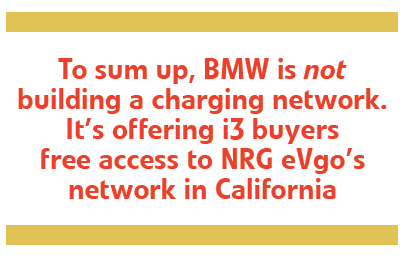

Confused yet? It’s no wonder that most media outlets didn’t understand the BMW charging announcements. EV charging is a complicated new industry.
Tesla has all its eggs in the electric basket, and has had incredible success to date. However, to further upset the automotive applecart, the company must continue to make bold high-risk moves – like blanketing the world with its proprietary Superchargers and spearheading a $5-billion battery Gigafactory.
At the same time, for the ultra-conservative car companies, Nissan and BMW’s DC charging moves are ambitious as well. Both have made huge investments in EV technology and clearly realize that a coherent DC fast charging plan is key to EV success. While neither charging strategy is as all-encompassing as Tesla’s, they’re not insignificant moves for two companies just beginning to venture outside of their comfort zones.
Of course, EV fans wish they would all just play along already and use the same charging standards. Unfortunately, no sign of cooperation is in sight.
This article originally appeared in Charged Issue 15 – August/September 2014



